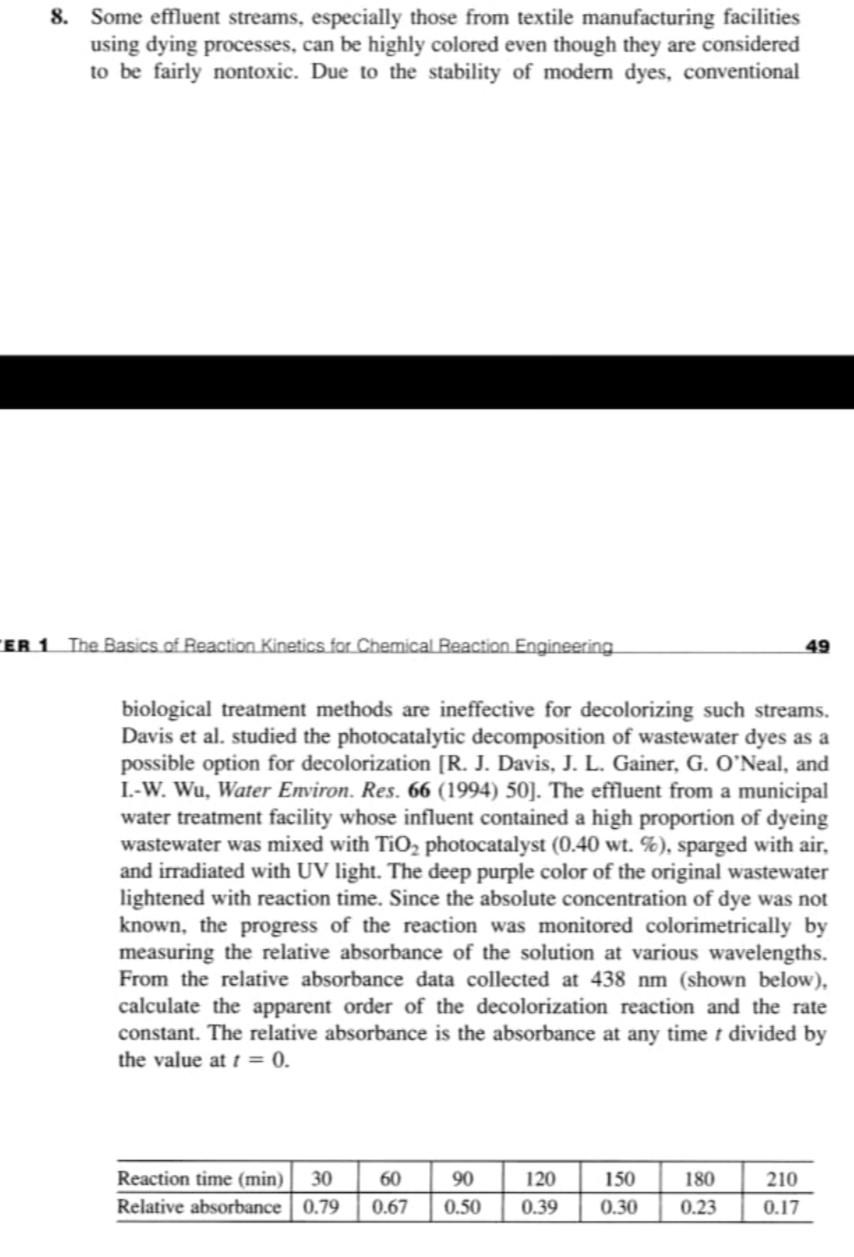Answered step by step
Verified Expert Solution
Question
1 Approved Answer
Chemical Reaction Engineering 8. Some effluent streams, especially those from textile manufacturing facilities using dying processes, can be highly colored even though they are considered

Chemical Reaction Engineering
8. Some effluent streams, especially those from textile manufacturing facilities using dying processes, can be highly colored even though they are considered to be fairly nontoxic. Due to the stability of modern dyes, conventional ER 1. The Basics of Reaction Kinetics for Chemical Reaction Engineering 49 biological treatment methods are ineffective for decolorizing such streams. Davis et al. studied the photocatalytic decomposition of wastewater dyes as a possible option for decolorization (R. J. Davis, J. L. Gainer, G. O'Neal, and I.-W. Wu, Water Environ. Res. 66 (1994) 50). The effluent from a municipal water treatment facility whose influent contained a high proportion of dyeing wastewater was mixed with TiO2 photocatalyst (0.40 wt. %), sparged with air, and irradiated with UV light. The deep purple color of the original wastewater lightened with reaction time. Since the absolute concentration of dye was not known, the progress of the reaction was monitored colorimetrically by measuring the relative absorbance of the solution at various wavelengths. From the relative absorbance data collected at 438 nm (shown below), calculate the apparent order of the decolorization reaction and the rate constant. The relative absorbance is the absorbance at any time t divided by the value at 1 = 0. Reaction time (min) 30 Relative absorbance 0.79 60 0.67 90 0.50 120 0.39 150 0.30 180 0.23 210 0.17Step by Step Solution
There are 3 Steps involved in it
Step: 1

Get Instant Access to Expert-Tailored Solutions
See step-by-step solutions with expert insights and AI powered tools for academic success
Step: 2

Step: 3

Ace Your Homework with AI
Get the answers you need in no time with our AI-driven, step-by-step assistance
Get Started


